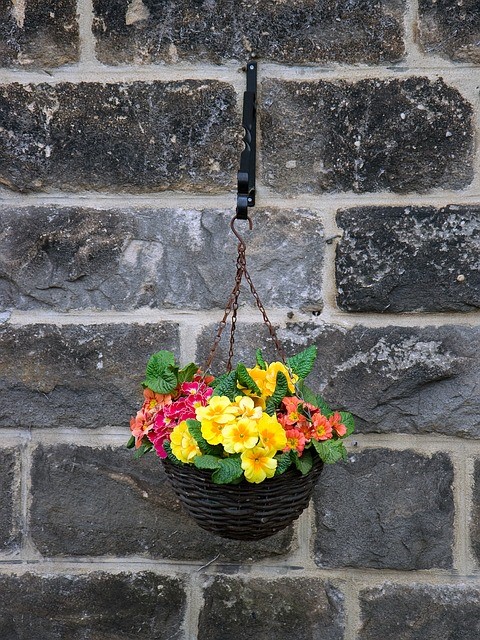
Photo by PublicDomainPictures via Pixabay
Hanging baskets add personal enjoyment as well as curb appeal to any home. If you're the creative type, you may prefer to make your own rather than purchase ready-made hanging baskets from home and garden retailers. However, DIY hanging baskets sometimes fail to thrive. The following tips and tricks help ensure that your baskets look and perform their best from spring through fall.
Choose Plants According to Sun/Shade Requirements
Sun-loving plants such as petunias languish and eventually fail to even bloom if placed in areas that don't meet their sun requirements, while shade-lovers such as impatiens and fuchsia may literally burn up if they're exposed to hours of hot sun on a regular basis.
If the sun requirements aren't listed on the tag that comes with the plant, check online or in your favorite encyclopedia-style gardening book and make sure that you select appropriate locations for your baskets. Also, keep in mind that varieties that thrive in shaded locations often do quite well in morning sun
Choose Plants That Bloom All Season
Most annual plants bloom from spring or early summer until frost, so stick with them rather than using perennials for your hanging baskets. You'll have to replace them every spring, but that helps keep things interesting and fun.
Pick Off Spent Blooms
When flowers go to seed, that sends a signal to the plant that it's time to start slowing down on the blooming process and focus its energy on seed production. Picking off spent blooms, or deadheading, helps fools the plant into continuing to produce flowers. Some annual varieties, such as Wave petunias, have been bred to keep producing even after individual blossoms go to seed, so these make good choices for busy homeowners who may not have time to pay meticulous attention to their hanging baskets.
Use Potting Soil Designed to Retain Water
Plants growing in hanging baskets require more watering than their counterparts growing in cultivated flower beds because their roots can't reach down deep to access water sources. Using a potting soil designed to retain water helps hedge their bets against drying out before you can get a chance to water them.
Use Potting Soil With a Slow-Release Fertilizer
Fertilizing hanging baskets with traditional products is tricky — if you apply too much, you run the risk of damaging or even killing the plants, and if you use too little, the fertilizer won't provide the desired benefits. Using potting soil that's infused with a slow-release fertilizer circumvents both of these problems.
Making your own hanging baskets not only saves you a bit of money at the home and garden center, it also helps you avoid the mass-produced look of the majority of ready-made hanging baskets.
About the Author


